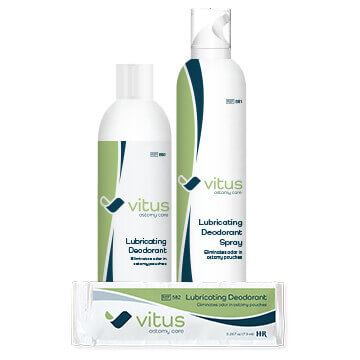
Whether you are a new or an experienced ostomate, managing ostomy pouch odor can be challenging. While pouch odor can be unpleasant and hard to manage at times, there are several methods to reduce ostomy pouch odor and help keep odors at bay, without any added stress.
Regularly Empty Your Ostomy Pouch
Arguably, one of the best ways to reduce ostomy pouch odor is to empty your ostomy bag on a regular basis. To help keep odors at bay, you should empty your pouch when it is one-third to one-half full to ensure it doesn’t get too heavy and loosen the seal around your pouching system.
For new ostomates, figuring out the best time to empty your ostomy bag may take some trial and error. Most ostomates find themselves emptying their ostomy pouch 4-10 times in 24 hours, but this can vary greatly depending on what type of stoma you have, the location of your stoma, and what type of pouching system you are using.
Regularly emptying your ostomy pouch will help prevent odor, while also keeping your pouching system from bulging under your clothes. If you are unsure or have any questions about the best way to empty your ostomy bag, consult your doctor to figure out what works best for you.
Culprits in Your Diet
You may not realize it, but some foods are known to cause a build-up of gas in your ostomy bag, which can contribute to ostomy pouch odor. These foods contain fructose, lactose, insoluble fiber, and starch that ferments in the large intestine during digestion and release gas when they are broken down.
A few examples of these foods include:
- Fish
- Dairy Products (Milk, Cheese, Yogurt, etc.)
- Beer
- Onions
- Asparagus
- Brussels Sprouts
- Beans
- Raisins
- Soda and Other Carbonated Beverages
- Garlic
- Nuts
- Mangos

The above is not a comprehensive list, and we do not recommend cutting these food culprits out of your diet completely, as some of them are essential for a balanced diet. However, cutting back or substituting some of the foods listed may be a good idea if you are worried about ostomy pouch odor. And as always, you should consult with your doctor or dietitian before starting a new diet or cutting back on any foods you regularly eat.

Use Odor-Eliminating Products
Let’s be honest, you’ve probably tried using air fresheners, body spray, tic tacs, or even poo-pourri to mask ostomy pouch odor in emergency situations. While these DIY methods can help in a pinch, they often only mask odor in the short term. However, there are products specifically made to help eliminate ostomy pouch odor and avoid any embarrassing pouch odors.
Odor-eliminating ostomy products are typically liquid or gel that can be poured into your ostomy pouch every time you empty your pouch or change your appliance. Ostomy pouch deodorant, like Vitus Ostomy Lubricating Deodorant, is very popular with ostomates and is formulated to eliminate/neutralize ostomy odor without any added fragrances to mask odor. Using a lubricating deodorant can also help to lubricate your pouch, which makes emptying and cleaning your pouch easier.
Use a Pouch Filter
In addition to lubricating deodorant, many ostomates use ostomy pouch filters to reduce unpleasant odor. The use of ostomy filters can help prevent gas build-up in your ostomy pouch, and greatly decreases odor. Most ostomy bags allow for a disposable filter, made of activated charcoal, to be placed into the pouching system and allow excess air to be released.
Trying a New Pouching System
If the above methods don’t seem to work and your ostomy pouch odor persists, it may be time to try a new pouching system, as you may be struggling with a pouching system that doesn’t properly fit or you may not be properly sizing your stoma.
When your pouching system does not fit properly, the seal between your body and ostomy pouch can weaken, which will inevitably cause odor and potential leakage.
There are many varieties, shapes, and sizes of ostomy bags to choose from that suit your body type and lifestyle the best. The most popular pouching systems include:
- One-piece systems consist of a skin barrier and pouch as a single unit, providing greater simplicity than a two-piece system but require changing the entire system when your ostomy pouch needs to be changed.
- Two-piece systems have two separate parts to the pouching system; skin barrier (also called a wafer or flange) and ap ouch. Two-piece systems are very popular because they allow ostomates to change the pouch without removing the skin barrier.
When trying out a new pouching system, no matter what type of pouching system you choose, there should be minimal gaps between your stoma and your appliance. The use of skin barrier rings or barrier paste may also help improve fit, reduce odor, and prolong wear time.
Live Life Freely with Vitus Ostomy Care
Every ostomy is different, however, it’s important to remember that ostomy pouch odor is a normal occurrence, and you shouldn’t be embarrassed by it. If you are struggling with ostomy pouch odor, request a sample of Vitus Ostomy Lubricating Deodorant today and live life freely.
We hope this article has given you some helpful tips on managing ostomy pouch odor, but if you feel like your pouch odor isn’t improving, please consult your doctor.
Disclaimer: The recommendations and information above should not be considered a substitute for personal medical advice or diagnosis. Before making any changes, consult your health care professional.
